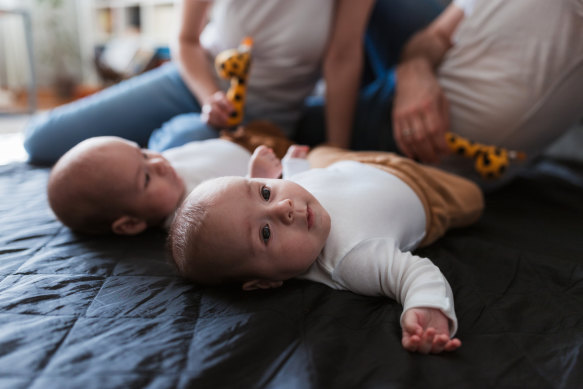Stark differences in fertility have emerged across Perth, with rates in inner-city suburbs now half the level needed for a population to replace itself from one generation to the next.
The Perth city statistical region, which includes Inglewood, Shenton Park, Mount Hawthorn and Wembley, had a fertility rate of 1.1 last year – way below the 2.1 replacement level needed to maintain a stable population, not including migration.
It was a similar story in the South Perth statistical region which includes Como, Manning and Kensington, with a fertility rate of 1.19.
But in Perth’s outer south region, including Leda, Wellard and Orelia, the fertility rate was a healthy 2.14. Rates in the statistical areas of Armadale (2.04), Swan (1.88), Mandurah (1.87) and Mundaring (1.79) were also well above the citywide average of 1.66.
An analysis of the report on regional fertility trends by consultancy KPMG shows very low rates in Perth’s wealthiest districts, including Cottesloe-Claremont (1.35) as well as inner suburbs such as Belmont-Victoria Park (1.46).
The total fertility rate measures the average number of children expected to be born to women during their reproductive years.

The birth rate in much of regional WA is much higher than Perth. Credit: Istock
KPMG analyst Terry Rawnsley, who authored the report, said the total fertility rate has fallen in every capital city since the onset of COVID-19.
Demographers have attributed falling fertility rates, evident in many countries, to the social and economic uncertainty caused by the pandemic.
“Australia’s total fertility rate has been below the replacement rate since the mid-1970s,” he said.
“It is the result of a complex interaction of social factors such as delayed family formation, increasing use of contraceptives and economic factors such as women increasing their investment in education and more active labour force participation.
“All the regions across Australia are below the replacement rate.”
The total fertility rate in Greater Perth dipped from 1.76 in 2018 to 1.66 in 2021, spot on the national average.
Greater Melbourne’s total fertility rate had one of the largest declines due to COVID-19, falling from 1.58 in 2019 to 1.46 in 2021.
In regional WA the fertility rate was generally much higher with the Whealtbelt (2.25), Mid West (2.19) and Kimberley (2.09) having the highest fertility rates.
Rawnsley expects fertility rates to recover somewhat in 2022 as the social and economic effects of the pandemic are reduced.
The Morning Edition newsletter is our guide to the day’s most important and interesting stories, analysis and insights. Sign up here.